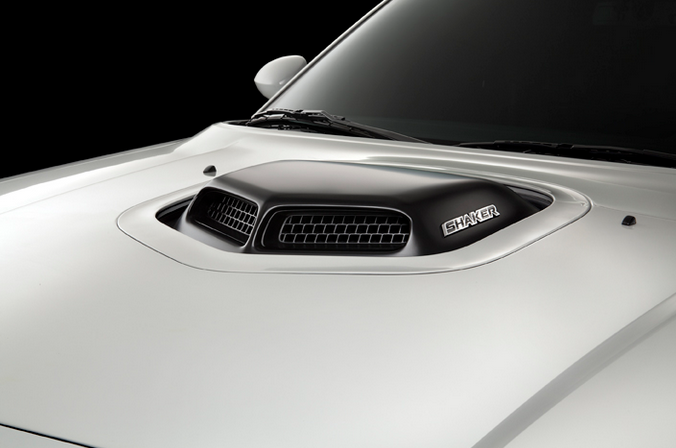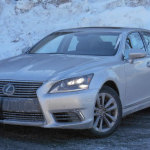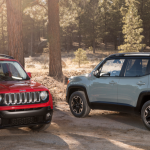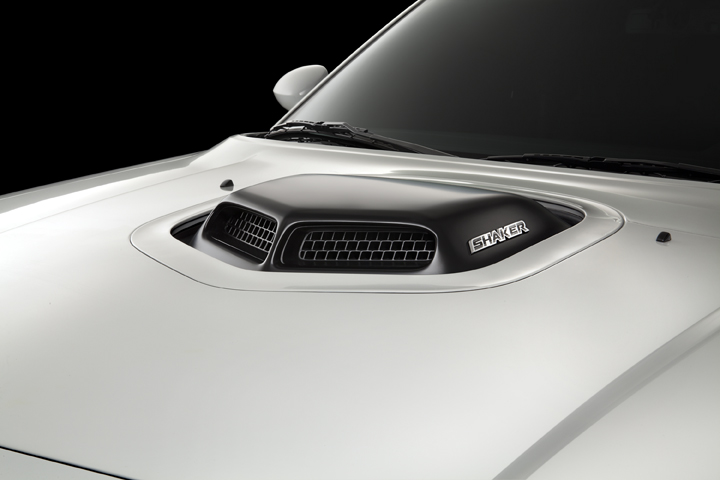
CHICAGO — Consumer Guide® sat down with Pietro Gorlier, president and CEO of Mopar, Chrysler Group LLC’s parts and service arm, at the 2014 Chicago Auto Show to talk about the operation’s products and prospects.
CG: Thanks very much for giving us some of your time this morning. The Mopar-Edition cars have been produced since the 2010 model year, always with black as a basecolor. The 2014 Mopar Challenger will be available in white. What prompted that change?
That’s a good question. Actually, we will offer the opportunity to have the car either black or white. You probably know that we are going to give customers the opportunity to choose among almost 100 different customizations, so these 100 [Mopar Challenger] units will be really fully customized one by one. Some part of the customization experience are three different stripes. That one [points to a picture of a blue decklid and bodyside stripe style], for instance, is one that we choose as a highlight. We thought that this stripe was very effective also on a white car, so we said, OK, let’s give the customer the opportunity to also choose the white color.
It’s going to be interesting to see how much will be the take rate of white and black. In about a month or a month and a half we will open orders. My expectation is that the car will be sold out pretty quickly.
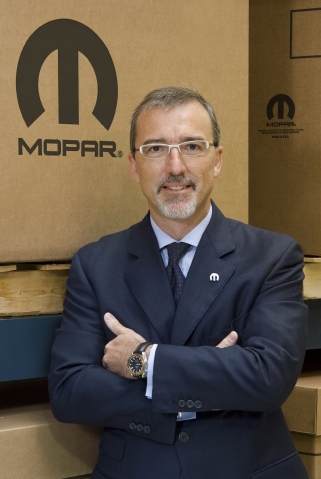
CG: A great throwback touch on the 2014 Mopar Challenger is the 1970-style “shaker” intake. How does that affect performance of this car?
We don’t declare exactly the number of horsepower, because the car is going to be homologated with the normal power. Let me put it a different way. Normally, when we work on the intake of a car, you can get up to 10, 15 horsepower additional, but we don’t have a specific number that we are going to—
So there’s no advertised rating for it?
No, we don’t change the power rating of the car.
But a customer might expect that it’s going to feel a little bit more lively.
The easiest way to tune a car is more air in and better flow of air out. So, in that particular case, you have both the intake and the possibility to install a cat-back exhaust. So, flow of the air will definitely help the performance of the car.
CG: The past Mopar editions have been limited-run cars with distinctive appearance modifications and a few add-on performance tweaks. Do you see a future where these vehicles might get a more thorough makeover, or would that begin to start to step on the toes of the SRT program?
That’s a very good point. Although every year we do our one-of-a-kind special edition, our main business, our DNA, is in the aftermarket. This is why, for instance, we launched the Scat Packs [engine-performance upgrades]. These will be packages that will allow to boost of the performance of the car starting from a stock car. We don’t want to start moving into the production side of high performance because we already have SRT. I think the history of Mopar has always been to give the opportunity to customers to start from a stock car and improving handling, the performance, the appearance, etc. We want to stick to that DNA.
CG: So the feature cars that you do every year are almost sort of a tip-off to enthusiasts and consumers that this is kind of what you can do with some of our pieces.
Absolutely. It’s normally the possibility to say we offer a car that, within the boundary of the homologation of that car, you get the best possible package in terms of handling, performance, etc., without going and touching the engine. I think that this has also been the transformation in the industry—if you think about all the standards in terms of emissions, in terms of fuel consumption, and also electronics. In the past, it was relatively easy to tweak a car. Today, it is a much complicated process. We can do it, but then you enter into a completely different water. When we do that, we do it through SRT with production vehicles.
Taking on Honda and Reaching Upmarket: Talking Cars with Chrysler Chief Al Gardner
We have developed other ways to improve the perception, the performance of the car, to get into the best handling—suspension, sway bars, lowering the car, etc.—through improving the air flow with spoilers, with splitters, with ground effects, and improving the efficiency of the engine through intakes and exhaust. So the combination of these three elements allows us to offer the best possible package of a car without starting at a supercharger or something like that. With the Scat Packs, we will give the customer the possibility also to do that other side of performance in the aftermarket.
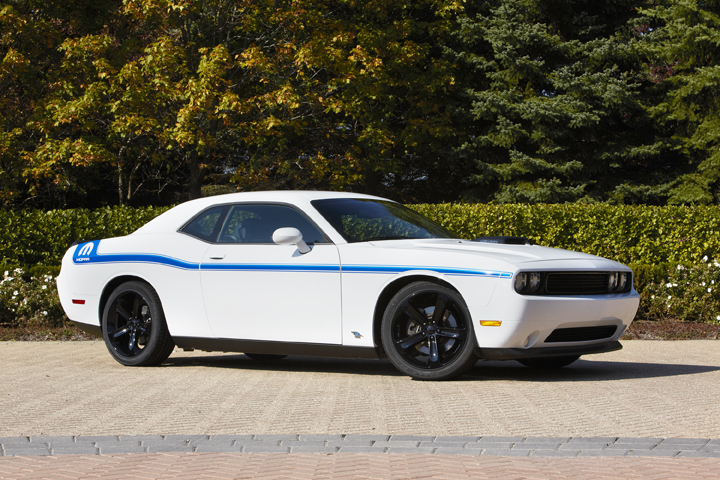
CG: What parts or services do Mopar customers seem to prefer? What are they buying?
We talk about service, I cannot make a distinction. If I put together on a global basis—and Mopar is now the brand for both Fiat and Chrysler—we have 500,000 part numbers. Obviously, the part numbers for maintenance are the fast movers: filters, and oil, and brakes. We have 70 million cars on the road worldwide.
When I look instead at accessories, it is absolutely clear that we have three big winners that are the Wrangler, the Ram truck, and the Challenger. These are the three winners. Then you get into what are the items that are installed. For every one of these three winners, there is a different story. When you look at the Wrangler, obviously, we are talking about performance items, upgrade of the capabilities even from rock rails, or bumpers, or lift kits, etc. We launched the Jeep performance-parts portfolio that is a portfolio of accessories of performance parts that are specifically designed for those that want to have the extreme experience in terms of off-road. When you go to the Ram truck, you move into the toolboxes, side steps, bed liners. Take a look at the truck that we have here, where we do an experiment of showing a sliding toolbox so that you can bring it and push back, combined with racks. When you go to the Challenger, you get into the brakes, air intakes, spoilers, and so forth, on the performance side. So it depends on the car.
There is something that is becoming relevant across the board, that is the electronic side of our business. A few years ago we started exploring a new world. What about Wi-Fi hotspots? What about the Electronic Vehicle Tracking System, GPS system, that allows you to monitor your car, know where the car is and to track the car to define a perimeter, and getting a message if the car goes out from that perimeter? Parental control. Define the speed limit and getting a text message if the car is speeding. I’m used to saying that I’m not very popular with teenagers, but better results with parents. Recently we were the first one in the industry—although everyone has been talking about it—we were actually the first one to launch the wireless charger, the mat that you have in your car where you put your phone on and the phone gets recharged. Everyone is talking about that becoming now a production item, but we were actually the first ones to come to the market with the Mopar ’13. And actually the EVTS is our best-selling item. It is the Electronic Vehicle Tracking System. It is our best-selling item because it goes across all the vehicles.
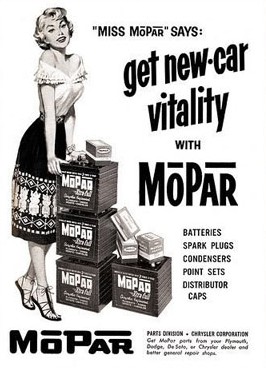
CG: Is there anything about these preferences or these interests from consumers that have surprised you?
It’s not a surprise, but it’s interesting to see that there is still a lot of consistent interest for the performance side of the business. Although you can imagine that we feel that everyone is just looking at reliability and mileage, etc., but still some of our cars are driving a significant interest for performance. And also, as I said, the Electronic Vehicle Tracking System, I thought it was a good product, but it has been a surprise how well it has sold. Most definitely beyond our expectations.
CG: What challenges does Mopar face as a business unit?
I like the question, because it’s the only thing that is keeping me awake at night. The customer base is changing. Your son, my son, my daughter, they will be different customers. They are completely different. Already some of the teenagers are different from us. Our kids will be even more different. My three-years-old son is absolutely capable to use an iPhone, an iPad. Actually, he dislikes a phone or a tablet that is not—I don’t want to promote Apple, but let me say if I give my son an old DVD player, he doesn’t like the DVD player. He wants a tablet. He wants something that can scroll. He is not interested in my old smartphone, without mentioning the brand. He is interested in this type of smartphone.
These customers will approach the maintenance and the service of the car in a totally different way. They will be used to do self-updates of the software, to download information from the web. They will be probably buying almost everything online. Everything is moving in that direction. So the approach that they will have to do the service of the car will be very different. I don’t want to wait. I don’t want to come to a dealership if it is not needed. My car is clearly mainly controlled by electronics, so why in the hell do I need to come to the dealership for a software update? And we are already offering some of these services online, so in some cases we offer software updates to our customers at will. So they will have a completely different approach to services. As a unit, we need to be ready.
The way in which you deal with a customer in the service line is going to be different. This is why, for instance, we launched the Wi-Advisor that is a tablet-based reception tool. It gives the possibility to our service advisors to register the car in seconds, just downloading immediately the information from the car without even having to open the hood. They can immediately download the history of the car, if there are [service] campaigns, what is the maintenance history of the car. So the reception of the customer in our service lanes will be, when it will be fully implemented, done in seconds. You don’t need paper. The customer will be able to sign the page directly with—I mean, it is an experience that you already have in some stores. You go in an Apple store, you have a similar experience. You don’t touch paper, you don’t touch anything. So we are driving our service lanes in that direction to be sure that we are ready for the customer. But it is also interesting to understand what is the next request of those guys. So that is what is our focus currently.
CG: What goals do you have for the division from a product and sales standpoint for the next, say, year or two?
We are always on two different axes. One is increasing and growing the business. We have been pretty effective so far to grow the business in very tough market conditions, because service is always discounting the industry of a few years earlier. So obviously 2008, 2009, 2010, the market wasn’t very good, so we put in less overall—not just Chrysler—less cars on the road, so we had, by definition, less customers. Now we are picking up in sales, so we will grow the car part, and we will have more customers. We want obviously to grow the business.
Alfa in America, Jeep in Asia: Sergio Marchionne Talks Chrysler and Fiat in 2014
The other side is the customer side of the equation, to improve the perception of the customers about the service that we can offer in our dealerships. There is still a strong prejudice when you go in a dealership, you pay more and you need to wait longer. We have launched in the last four years a strong attack to these prejudices with the expansion of our express-lane facilities, so we have more than 33 percent of our dealer network already offering express service. We attack it in the convenience; you don’t need to wait. Wi-Advisor will boost that area. Then we started increasing the number of dealers open for service on Saturday. We are more than 80 percent open. The globality of our network is open on Saturdays. This is tackling the prejudice in terms of convenience. We offer sometimes conditions in terms of prices that are absolutely aligned to the aftermarket. So we are trying to connect with those customers that still have avoided the second life of the car—they feel that going to a dealership is less attractive—and conquesting them. We have been successful, but we need to keep on growing.
When you look at it, our sales grew up double digits in the last three, four years. It means that we have conquested a lot of new customers. We want to retain them in our stores. That’s the area where, globally—it’s not just a North American problem—everything we do at Mopar today is really globally exploited. We are opening express lanes in the Middle East, in South America, in Mexico, so the process is already becoming absolutely global. We have integrated the accessories portfolios so that we can offer the same opportunities—obviously, there are regulations and standards that are sometimes different, but we offer everything in the world. Mopar, I think, it was already not far from integrating the two sides of the companies, Fiat and Chrysler. It was a need because we started immediately sharing platforms and components, so we had to be ready from a service standpoint. So we will leverage that investment in the next year, helping the company to have the shortest possible time to market, not having to bother about the service side of it.

